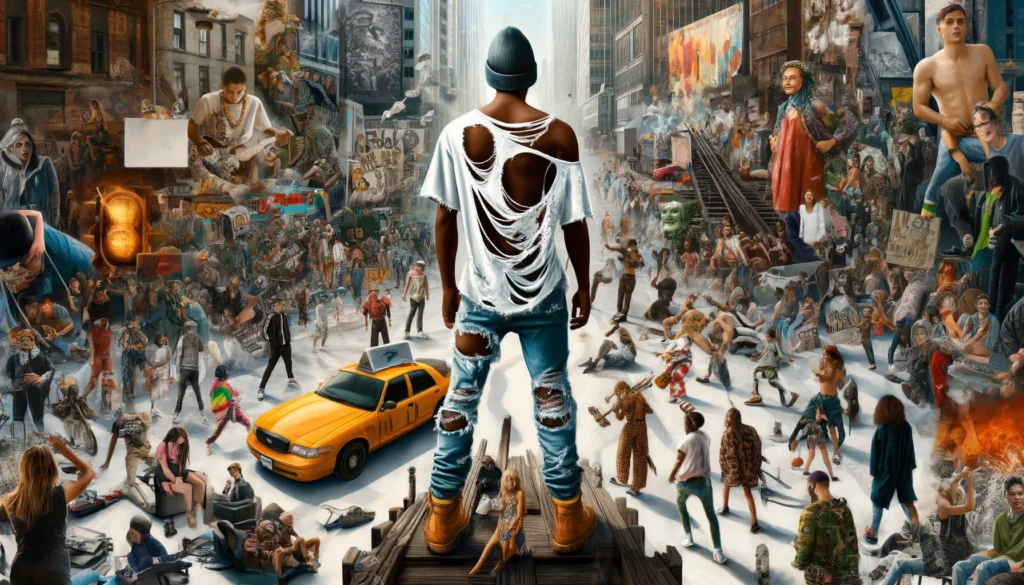In the fabric of modern fashion, few pieces carry as much emotional weight and cultural significance as Rip T-shirts. Specifically, shirts memorializing figures like Harambe and those bearing the iconic Rip Curl logo serve not just as fashion statements but as symbols of broader social and cultural narratives. This blog delves into the significance and style of these T-shirts, exploring their roles in fashion trends and as memorials or tributes.
Rip Harambe T-Shirts: More Than a Meme
The tragic incident leading to the death of Harambe, the gorilla, sparked a global outpouring of emotions, quickly transcending into a cultural phenomenon that found expression through various mediums, including fashion. Rip Harambe T-shirts emerged as a powerful form of tribute, blending sorrow, solidarity, and sometimes, satire, reflecting the complex ways in which modern society processes grief and controversy.
Cultural Significance
Rip Harambe T-shirts became more than mere memorabilia; they represented a collective moment of reflection on issues of animal rights, zoo safety, and human responsibility. Wearing these shirts allowed people to signal their awareness and stance on these issues subtly, showcasing how fashion can serve as a canvas for societal commentary.
Rip Curl T-Shirts: Riding the Waves of Fashion
On the other side of the spectrum, Rip Curl T-shirts epitomize the adventurous spirit of surf culture. As a brand deeply rooted in the history and identity of surfing, Rip Curl’s apparel, especially its T-shirts, carry the essence of freedom, thrill, and connection to nature that surfing embodies.
Style and Influence on Fashion Trends
Rip Curl T-shirts have consistently influenced casual and sportswear fashion trends, thanks to their dynamic designs that capture the vibrancy of surf culture. They appeal to a broad audience, from hardcore surfers to those who simply aspire to a laid-back, beach-inspired lifestyle, demonstrating the brand’s significant role in shaping and reflecting fashion trends.

The Role of Rip T-Shirts in Fashion and Social Movements
Rip T-shirts, whether memorializing a beloved animal or celebrating a lifestyle brand, highlight the unique intersection of fashion, culture, and social commentary. They allow wearers to make personal statements, engage with broader cultural discussions, and align with communities sharing similar values or experiences.
Fashion as a Vehicle for Tribute and Identity
These T-shirts underscore the ability of fashion to act as a vehicle for tribute, identity, and cultural commentary. They offer a way to commemorate, celebrate, and communicate, serving as wearable badges of honor, memory, or affiliation.
When styling Rip T-shirts, it’s important to consider the context and message they convey. For Rip Harambe T-shirts, pairing them with respectful casual wear can honor the memorial aspect. Rip Curl T-shirts, representing surf culture, can be styled with beach-inspired accessories for a coherent look. Always aim for outfits that respect the essence of what these T-shirts represent.
Before purchasing a Rip T-shirt, consider the authenticity of the product, especially for Rip Curl branded items, ensuring you’re supporting legitimate businesses. For Rip Harambe T-shirts, think about the message and whether it aligns with your views on animal rights and conservation. Additionally, evaluate the quality and sustainability of the T-shirt to ensure it lasts and aligns with eco-friendly practices.
Yes, fashion can significantly contribute to social and cultural discussions. Rip T-shirts serve as examples of how clothing can express solidarity, raise awareness, and spark conversations on various issues. Whether it’s through memorializing significant figures or embracing lifestyle brands with a message, what we wear can reflect and influence societal attitudes and values.
Rip T-shirts, in all their forms, from those memorializing figures like Harambe to those celebrating brands like Rip Curl, are poignant reminders of fashion’s power to mirror society, evoke emotions, and make statements. As we choose and wear these garments, we weave ourselves into the broader tapestry of cultural narratives, trends, and discussions, showcasing fashion’s enduring role in expressing and shaping our collective identity.